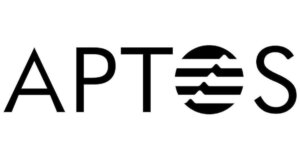 Inside Hydra: Cardano’s (ADA) ambitious layer-2 scalability solution
Inside Hydra: Cardano’s (ADA) ambitious layer-2 scalability solution Inside Hydra: Cardano’s (ADA) ambitious layer-2 scalability solution
Developed alongside Cardano, Hydra was designed to prevent any scalability issue that might arise as the network grows in usage and adoption.

Cover art/illustration via CryptoSlate. Image includes combined content which may include AI-generated content.
Scalability is one of the biggest problems the crypto industry is facing today. The unprecedented growth the industry has seen has made using DeFi a slow, expensive, and risky endeavor that has been pushing users towards more centralized platforms.
And while Layer 2 networks emerged as a perfect solution to this problem, most of them have been designed as a method for damage control, rather than a complementary addition to a blockchain.
Cardano’s Layer 2 scalability solution was built before problems occurred
This, however, isn’t the case with Cardano (ADA). Its parent company IOHK took a different approach to expand the blockchain’s capacity—designing a Layer 2 scaling solution alongside the blockchain.
Its native scalability solution, called Hydra, was designed to address the biggest issues blockchain networks face when dealing with high throughput. Firstly, the network needs to strike a balance between setting fees low enough to satisfy its users and setting them high enough to deter potential Denial-of-Service (DoS) attacks. Secondly, the network also needs to ensure that it doesn’t face storage problems as its transaction history log grows with increased usage.
Hydra manages to address all of these concerns by providing the network with a more efficient means of processing transactions. It enables most of the transactions to be processed off-chain and uses the main-chain ledger as the secure settlement layer.
As Hydra is only loosely coupled to the main chain, it introduces the concept of “isomorphic state channels.” While the concept truly is a mouthful, these channels are nothing more than off-chain ledger siblings connected both to each other and to the main chain.
Each of these chains, called Heads, can be easily created and provide native assets, NFTs, and Plutus scripting.
According to a recent blog post from IOHK, the Hydra Head protocol is currently being extensively tested and will soon become a solid and stable foundation for developers to build real-world applications.
In the next 6 to 12 months, IOHK will work on introducing ways to interconnect multiple Hydra Heads to increase the reach of the scaling solution.
“Hydra replicates the main chain’s functionality while minimizing friction for users, but still allows the flexibility of having a different fee/cost structure and timing constraints on Layer 2,” IOHK explained. “Any successful ecosystem balances the needs of all users. We want this ecosystem to serve the needs of individual consumers, enterprises, professionals, and the growing list of DApps and their developers.




 CoinGlass
CoinGlass 


 Farside Investors
Farside Investors 




























































































